Kingdom Animalia Order Araneae Family Nephilidae Scientific name Nephila clavipes Rank Species | Phylum Arthropoda Suborder Araneomorphae Genus Nephila Higher classification Golden silk orb-weaver | |
 | ||
Similar Golden silk orb‑weaver, Orb‑weaver spider, Nephilidae, Arachnid, Argiope | ||
Nephila clavipes the banana spider
Nephila clavipes is the only species of golden orb-web spider indigenous to continental North and South America. In the United States it is commonly known as the "banana spider".
Contents
- Nephila clavipes the banana spider
- Golden orb web spider banana spider nephila clavipes
- Physical attributes
- Etymology
- Distribution and transport
- Significance to humans
- References
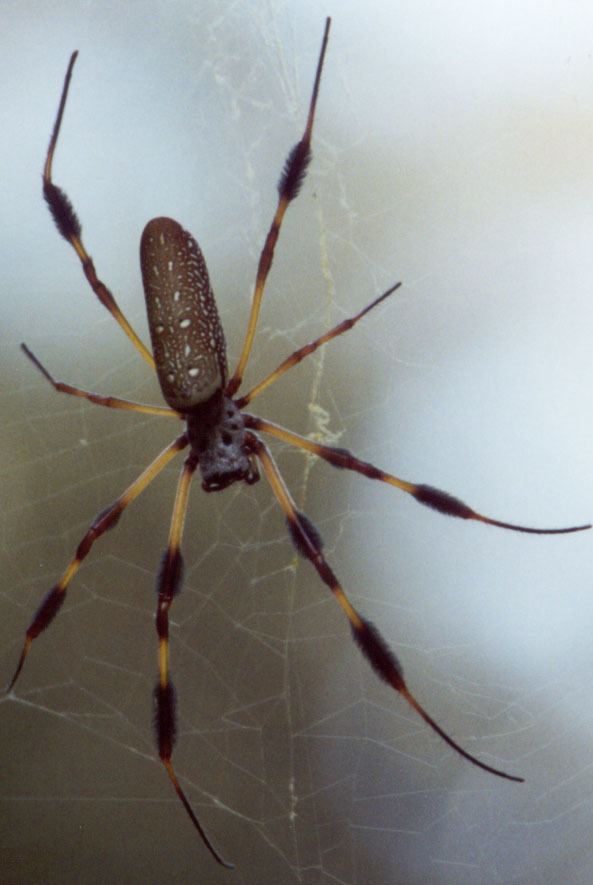
Golden orb web spider banana spider nephila clavipes
Physical attributes
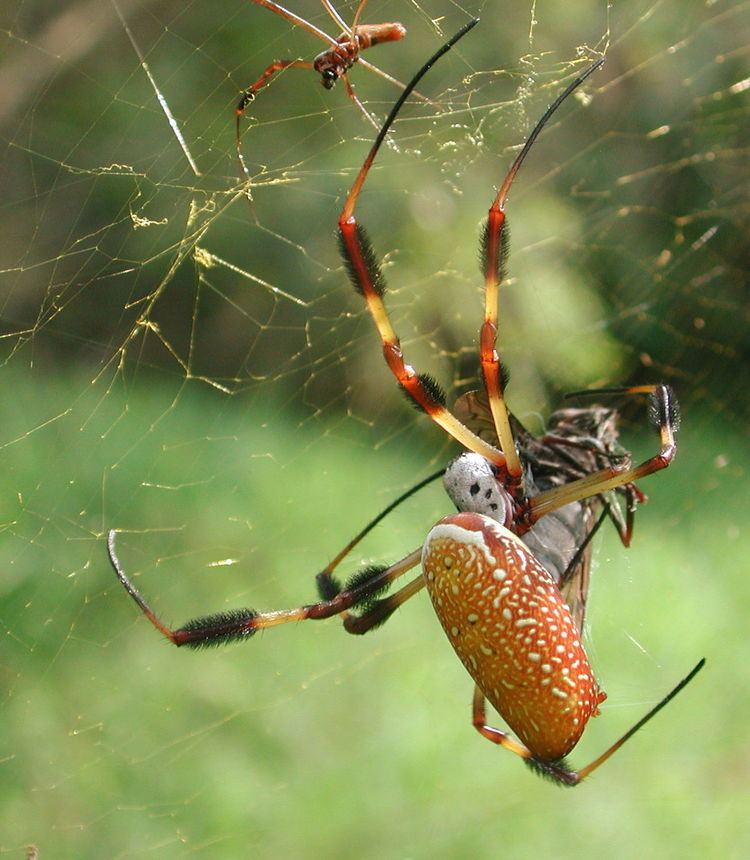
Nephila clavipes has the large size and the long legs with clumps of hair that are typical of the genus. It is large compared to most other members of the genus, and is distinguished by the bright colors of the female abdomen, which changes color as the spider matures.
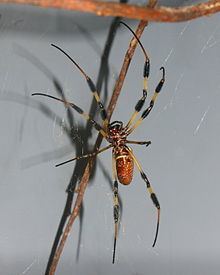
As is usual among orb-weavers, there is marked sexual dimorphism in general appearance, but especially in size; in linear measurements males are three to four times smaller than females, and they also are more slenderly built. This implies a mass some thirty to seventy times smaller than that of a large female.
Etymology
The specific epithet clavipes is derived from the Latin:
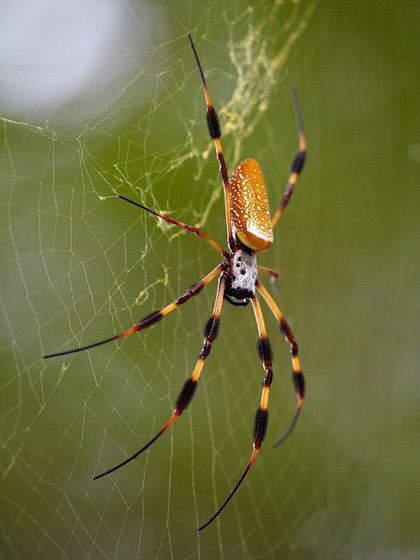
In assigning the name, Linnaeus apparently referred to the clumps of hair on the legs.
Distribution and transport
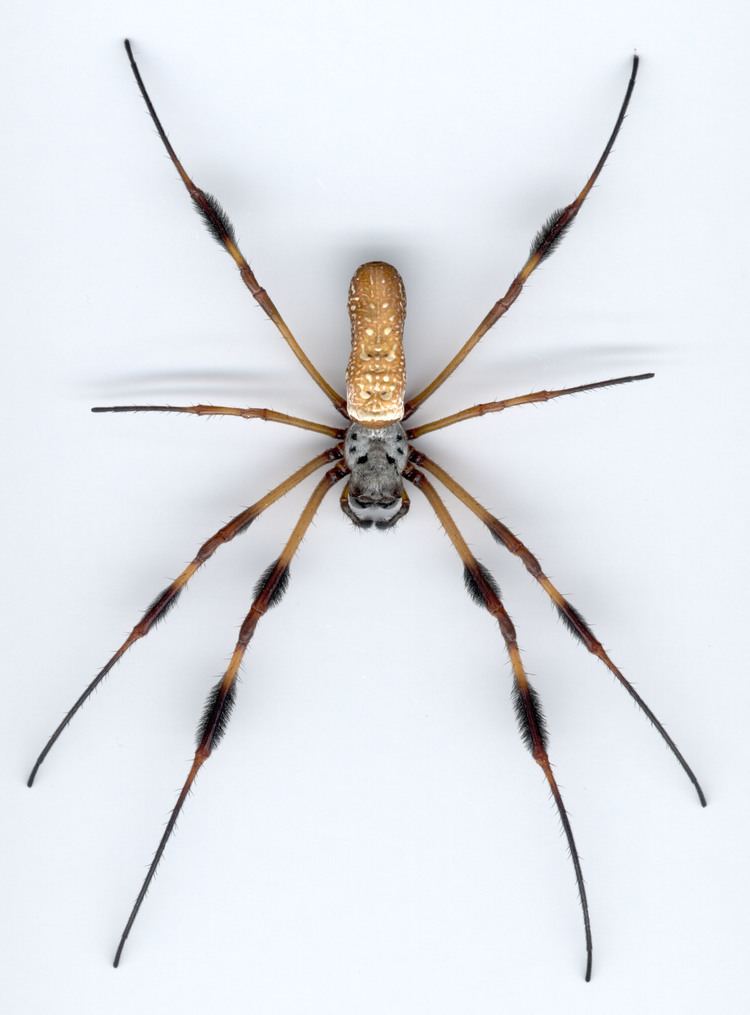
Nephila clavipes occurs most commonly in the Antilles and in Central America from Mexico in the north through Panama in the south. Less abundantly it occurs as far south as Argentina and in the north it occurs in parts of the southern states of the continental USA. Seasonally it may range more widely; in summer it may be found as far north as lower Eastern Canada. Beyond 40° N latitude these spiders seldom survive the winter.
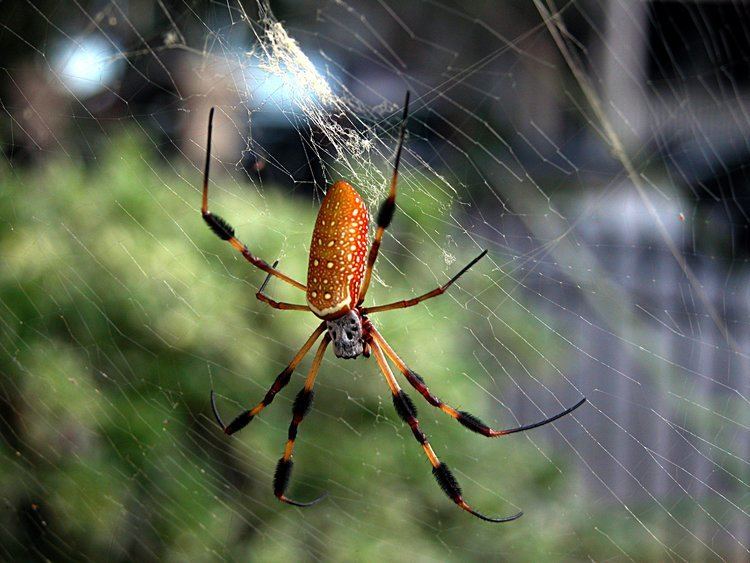
Because humans inadvertently transport spiders as passengers in cargo containers, plant nursery stock and the like, Nephila clavipes generally occurs very unevenly over wide areas; often there are patches of high local densities far from any other populations. Accidental human transport of the species increases markedly in late August to early September, when the spiders' reproduction is at its height.

The main web of a mature female may be as large as one meter in diameter, not counting the main filaments that anchor the web between trees; such anchor filaments may be two or three meters in length. A yellow pigment in the silk lends it a rich golden glow in suitable lighting. Males come into the female's web for copulation and mate with her while she is feeding and unable to attack them. After mating, the female spins an egg sac on a tree, laying hundreds of eggs in each sac.
Significance to humans
The spider is not aggressive and only bites if handled roughly; the venom is relatively harmless and rarely causes more than slight redness and temporary localized pain.
A single thread of the anchor silk has a tensile strength of 4×109 N/m2, which exceeds that of steel by a factor of eight (Ultimate strength of steel 500x106 N/m2).
The silk of Nephila clavipes has recently been investigated to evaluate its usefulness in surgically improving mammalian neuronal regeneration. In vitro experiments showed that a filament of the silk can lead a severed neuron through the body to the site from which it was severed. Best of all for these experiments, the silk elicits no reaction from the immune system, and thereby escapes rejection by the host body.
